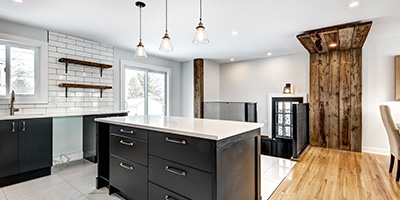7 Relaxing Bedroom Ideas for a Peaceful Slumber

Escape the Daily Grind in Your Own Bedroom Sanctuary
Today’s the day you say goodbye to a bedroom filled with jumbled clothes, unfinished tasks and harsh lighting – and hello to a sleep haven that melts away stress and ushers in tranquility. This is the power of creating a bedroom sanctuary. In just a few simple steps, you’ll learn how to transform your space from a chaotic battleground to the cozy minimalist bedroom you’ve dreamed of.
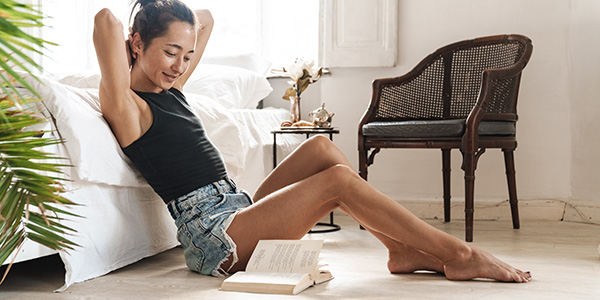
Why You Deserve a Bedroom Sanctuary
Over the course of a day, you’re likely to spend 11 hours in bed both sleeping and lounging around. This adds up to nearly half of your lifetime — and underscores just how important it is to create a relaxing bedroom sanctuary.
The fact is, you deserve a bedroom that speaks to your personality and feels like a hug. A place that reflects your inner calm and provides a refuge from the daily hustle. This is why soothing bedroom decor isn’t only a matter of style. According to SleepFoundation.org:
“A relaxing environment is essential for a good night’s rest. Studies have shown people simply sleep better when their bedroom is optimized for temperature, noise and light levels, and comfort. And since sleep quality and duration are directly tied to other aspects of human health, a bedroom environment that promotes sleep can also improve how you feel while you’re awake.”
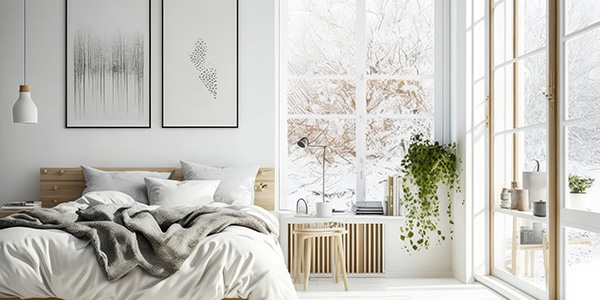
How to Create the Relaxing Bedroom of Your Dreams
1. Declutter
Too much clutter in your bedroom is more than an eyesore. Heaps of laundry and surfaces covered in trinkets can lead to cognitive overload, increasing stress levels and making it harder to fall asleep. Simple decluttering tips to create a cozy minimalist bedroom include:
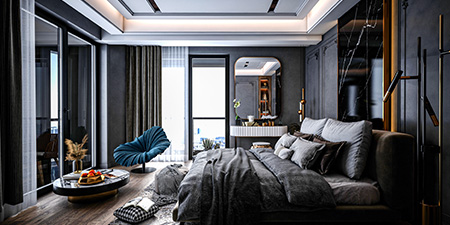
- Get rid of trash and any other items you don’t need or use; donate useable items to charity
- Make your bed
- Clear off all flat surfaces, such as dressers, nightstands and the floor — including under your bed
- Put dirty clothes in a hamper and clean clothes in your closet
- Go through clothing items and donate any that don’t fit or you no longer wear
- Organize items you want to keep, such as jewelry, books and glasses, into storage bins and drawers
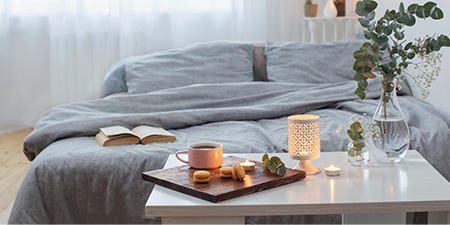
2. Choose Relaxing Bedroom Colors
There’s no right or wrong when choosing a color palette for your bedroom. Pick colors that resonate with your personality, but remember that certain colors do tend to give off more soothing vibes than others.
Bedroom paint colors that promote calm include blues and greens.
- Shades of blue may remind you of the sky and sea, and are linked with lower blood pressure, according to researchers with Cyprus International University. Blues are useful for encouraging reflection and a calm mind, particularly in their softer tones.
- Green is also an “emotionally calming color,” researchers reported, adding that green can promote harmony, peace and equilibrium — all ideal traits when you’re looking to relax. Beyond paint colors, be sure to consider the decor in your bedroom.
You can use pillows, rugs and wall art to add pops of pale pink or purple, leading to a comforting and creative atmosphere. But be wary of colors like bright red, yellow and orange, which may be too stimulating for your bedroom sanctuary.
3. Use Warm Lighting
When considering bedroom lighting ideas, remember that a dark bedroom is best for sleep. Bright, artificial overhead lights can simulate daytime and disrupt your circadian rhythm. So can blue light from your computer, television or cellphone. Even street lights shining through your bedroom window can make it difficult to relax, unwind and fall asleep.
During the day, try to embrace natural lighting in your bedroom. At night, the best light color for your bedroom is dim, warm-colored lights, such as yellow, orange or red light. Options to get more warm light in your bedroom include:
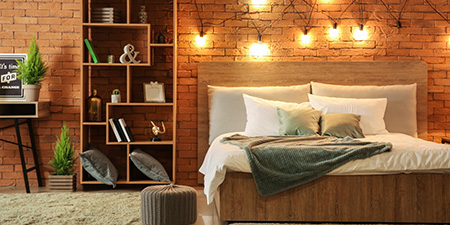
- Replace existing bulbs with warm-colored light bulbs (anything less than 3000K) for an easy fix.
- Add dimmer switches to your bedroom, so you can gradually dim the lighting to help your body adjust to nighttime after the sun sets.
- Use fairy lights to create a soft, peaceful vibe. String them up around your windows, mirror or bed frame as part of your soothing bedroom decor.
- Try salt lamps and bamboo lanterns to add a mellow warm ambience to your space.
To avoid exposure to blue light, which may make you feel more alert than relaxed, keep electronics out of your bedroom. You can also install blackout curtains on your windows, if necessary, to keep out light from the street or nearby houses.

4. Soundproof Your Room to Reduce Noise
Noise pollution, which can come from traffic, construction, loud music and even household appliances and tools like leaf blowers, can disturb your sleep and stress you out. So, taking steps to soundproof your bedroom can help reduce noise while increasing rest and rejuvenation.
This relaxing bedroom idea can be as simple as adding a fan for white noise, or as complex as installing soundproofing panels. The right option for you depends on how much noise you need to silence and your budget. Several inexpensive soundproofing options for any DIYer include:
- Reduce noise from your windows using soundproof curtains, noiseproofing sealant and insulation tape
- Use an area rug to absorb noise; for even better results, use a soundproof rug pad with it
- Add soundproofing paint or sound-reducing wallpaper
- Get upholstered furniture, such as cozy chairs or a loveseat, to absorb more noise; extra throw pillows and even blankets draped over the back of a chair can further reduce noise
- Use a fan or white noise machine to help cover up background noise
5. Choose the Right Mattress
Sinking into a comfortable bed is the epitome of relaxation, making your mattress the foundation of your bedroom sanctuary. The best mattress for you depends on your personal preferences and factors like sleep position.
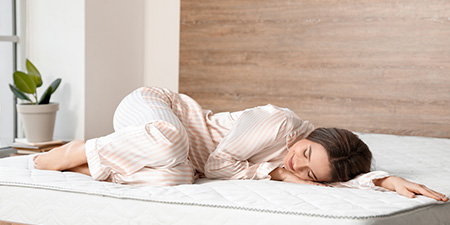
- Back sleepers may do best with a memory foam or medium to firm mattress that provides support for proper spinal alignment and your lower back.
- Side sleepers, however, may find a softer mattress more relaxing, as it allows your shoulders and hips to sink into the bed.
- If you’re a stomach sleeper, a firm mattress is typically best to keep your spine in neutral alignment.
Wondering when to replace your mattress? If yours is more than 10 years old, there’s a good chance it’s time.
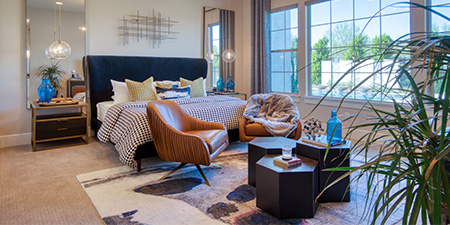
6. Consider Your Furniture
Too much or too little furniture can throw off your room’s cozy feel, making it overly cramped or barren. To get to that Goldilocks zone, choose functional pieces you love and nothing more.
For maximum feng shui, arrange your bed so you can see the door while you’re in it and choose a sturdy headboard. If the headboard has soft corners or a rounded shape, even better. These features are said to promote a more peaceful environment.
If you have the space, an overstuffed chair is a good addition even for a cozy minimalist bedroom. It provides a spot for you to read, unwind and relax when you’re not ready to get in bed.
7. Be Purposeful With Your Accessories
The sky’s the limit when it comes to soothing bedroom decor. After all, a restful retreat shouldn't have to sacrifice style for comfort! A fluffy shag rug, throw pillows and soft bedding all fit the bill. Layer different soft textures, such as velvet, quilts, faux fur and cashmere, for interest and comfort.
You may also enjoy a weighted blanket or silk pillowcase, and consider swapping out fabrics to match the season — such as flannel sheets in the winter and bamboo or cotton in the summer. Adding houseplants is another relaxing bedroom idea that’s often overlooked.
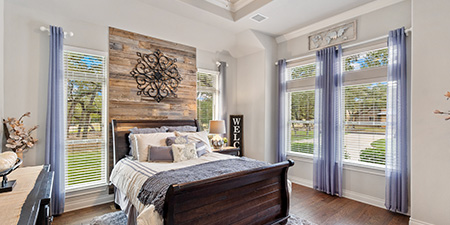
Choose a snake plant, also known as mother-in-law’s tongue, to help purify the air or jasmine for relaxation — its natural calming effects have been valued for centuries. An essential oil diffuser for aromatherapy is another great choice for a peaceful bedroom decorating idea. Lavender, chamomile and ylang ylang essential oils are popular options for stress relief and sound sleep.
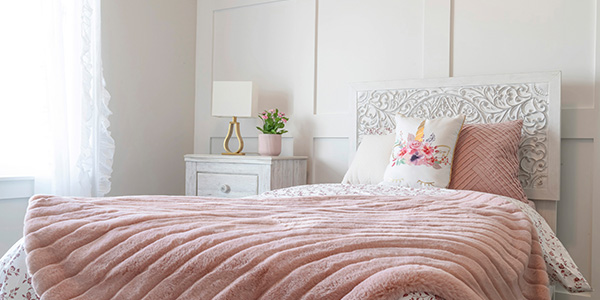
What Not to Include in Your Cozy Minimalist Bedroom
For a truly restful retreat, what you include in your bedroom is just as important as what you don’t.
Ban All Electronics (Including Your Work Computer)
First to go? Electronic devices with constant notifications that keep drawing you back into your daily grind. Toward that end, if you work from home, don’t even think about putting your desk in your bedroom. This is a recipe for mental burnout, while having a designated home office space marks a distinction between work and home.
If you have no other option, use privacy screens or furniture to create a boundary between your work space and the rest of your bedroom.
Exercise Elsewhere
Even exercise equipment might be better placed anywhere but your bedroom, as it serves as a reminder of daily tasks and activity in an area of your home where you’re meant to relax. Stationary bikes, free weights, treadmills and elliptical machines all qualify as exercise equipment you should ban from your bedroom. If you’re looking for ways to incorporate fitness into your bedtime routine, consider some relaxing stretches or yoga poses instead.
Create a Laundry-Less Retreat
Dirty laundry is another relaxing bedroom no-no. If it’s strewn about, it will add to visual clutter. But even in a hamper, dirty laundry can be a source of odors and mold, and keeps your to-do list front and center while you’re trying to destress.
A bathroom or laundry room makes a better option for storing dirty clothes or, if you have the space, build a walk-in closet complete with a built-in hamper that’s tucked out of sight. Resist the urge to pile clean laundry in your bedroom as well — it will only mock you from the corner until you’ve folded it and put it away.




